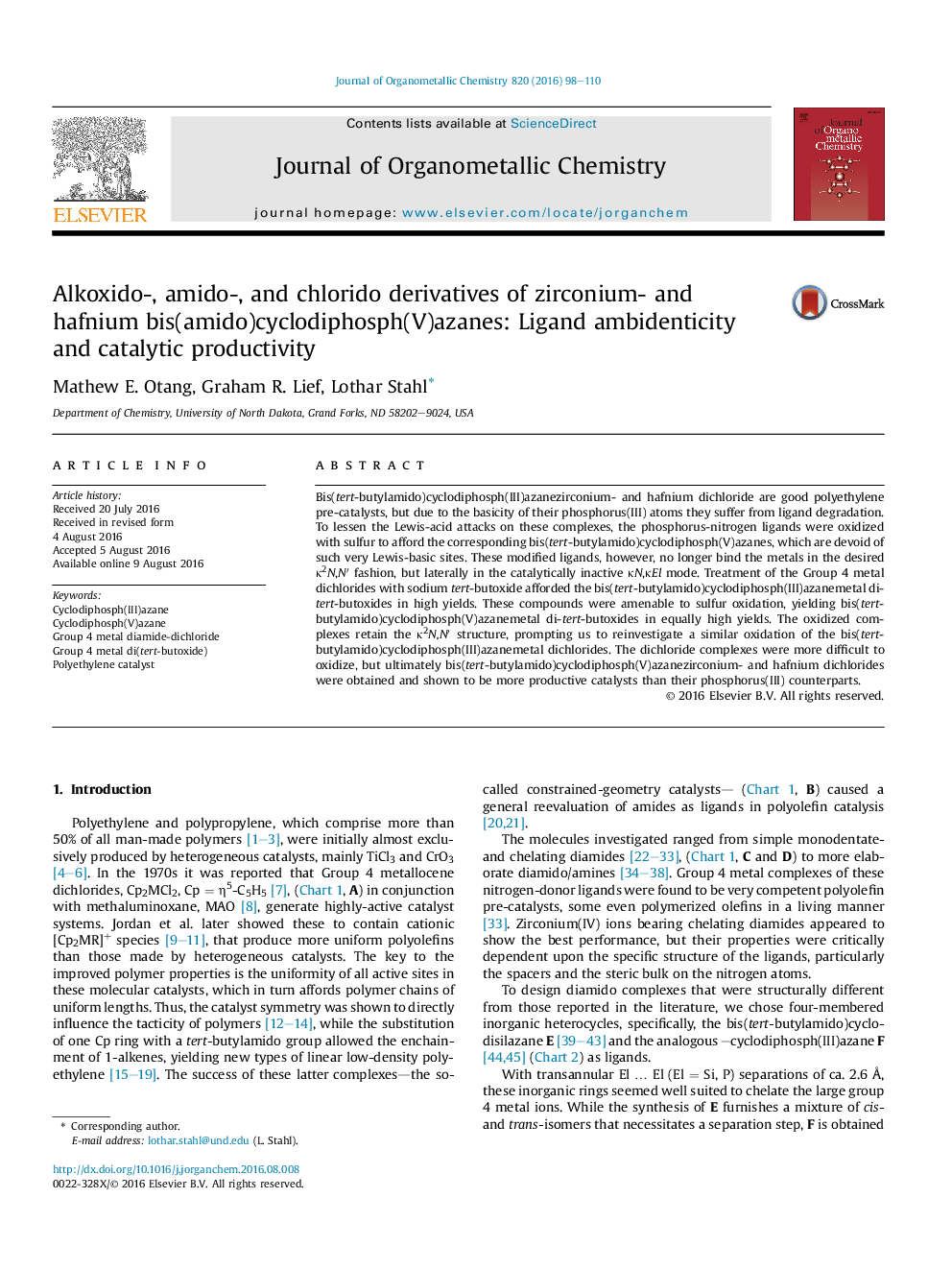| Article ID | Journal | Published Year | Pages | File Type |
|---|---|---|---|---|
| 1321588 | Journal of Organometallic Chemistry | 2016 | 13 Pages |
•κ2N,N′-Bis(tert-butylamido)cyclodiphosph(III)azanezirconium dichloride polymerizes ethylene.•The catalyst deactivates due to Lewis-acid attack on the phosphorus(III) centers.•A bis(tert-butylamido)cyclodiphosph(V)azane ligand yields an inactive κN,κS catalyst.•Oxidation of the original catalyst with sulfur generates a more productive κ2N,N'catalyst.
Bis(tert-butylamido)cyclodiphosph(III)azanezirconium- and hafnium dichloride are good polyethylene pre-catalysts, but due to the basicity of their phosphorus(III) atoms they suffer from ligand degradation. To lessen the Lewis-acid attacks on these complexes, the phosphorus-nitrogen ligands were oxidized with sulfur to afford the corresponding bis(tert-butylamido)cyclodiphosph(V)azanes, which are devoid of such very Lewis-basic sites. These modified ligands, however, no longer bind the metals in the desired κ2N,N′ fashion, but laterally in the catalytically inactive κN,κEl mode. Treatment of the Group 4 metal dichlorides with sodium tert-butoxide afforded the bis(tert-butylamido)cyclodiphosph(III)azanemetal di-tert-butoxides in high yields. These compounds were amenable to sulfur oxidation, yielding bis(tert-butylamido)cyclodiphosph(V)azanemetal di-tert-butoxides in equally high yields. The oxidized complexes retain the κ2N,N′ structure, prompting us to reinvestigate a similar oxidation of the bis(tert-butylamido)cyclodiphosph(III)azanemetal dichlorides. The dichloride complexes were more difficult to oxidize, but ultimately bis(tert-butylamido)cyclodiphosph(V)azanezirconium- and hafnium dichlorides were obtained and shown to be more productive catalysts than their phosphorus(III) counterparts.
Graphical abstractBis(tert-butylamido)cyclodiphosph(III)azanezirconium dichloride is an active polyethylene catalyst, but its Lewis-basic phosphorus atoms make it susceptible to degradation. Ligand oxidation with sulfur prior to metalation produces an inactive κN,κS zirconium complex. Oxidation after metalation retains the original κ2N,N′ structure and generates a more productive catalyst.Figure optionsDownload full-size imageDownload as PowerPoint slide
